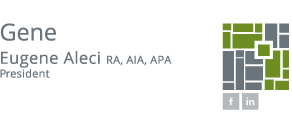Important that you "discipline" your client (and yourself) to be careful about this. Not to say, you should never allow it, but you need to develop some friendly language about it for your clients, and use it whenever you need to...something like:
"You know, that could be a pretty good idea, and I'd be happy to pursue that for you ( --if you truly would be glad to do it, that is --), and if you think it's worth adding some additional amount to our fee so we can develop it for you, we could look into it. I say this, Mr. Client, because, you know, we didn't have those new requirements or needs that we've just identified today factored in to our proposed scope of work for your project, and I'm always trying to be careful with your funds spent on design and construction drawings so you will have funds available for construction.... If you can justify some added design expense for that (new idea/new need), then we'd be happy to add this to our scope....Let me take an hour to think that through and figure out how extensive a change this would be, what it might take for us to make those changes, and I'll get back to you with a modest additional fee proposal to add it. I don't think it should be a lot of additional expense, but let me take the time to think about it and I'll be back to you ASAP."
This usually puts a client on notice, and gives you a shot at increasing your fee to cover unintended things that come up. Of course, it helps most if you can do this early-on and make a habit of it -- even before you've exceeded available time, rather than after you're way beyond your fee limit. Also, it helps hugely if you happened to define this in your proposal, by writing something like: "Anything not specifically listed in this proposal or stated as "included" in architect's scope of services will be considered an additional service, and if desired by client it can be added to the original services scope and fee, with client's authorization."
Hope this helps,

Community Heritage Partners
Email: aleci@chpartners.net
Web: CHPartners.net
Phone: 717.393.1639
Address: 214 W. Grant St. Lancaster, PA 17603
NOTICE: This message is private communication. It, and any files, text, or drawings attached, contain confidential and privileged information for the sole use of the intended recipient(s). If you are not the intended recipient, you may not read, copy, use, or disclose any content to others. If you received this message in error, please notify the sender by reply email immediately and destroy all copies of this message and any attachments. Thank you.